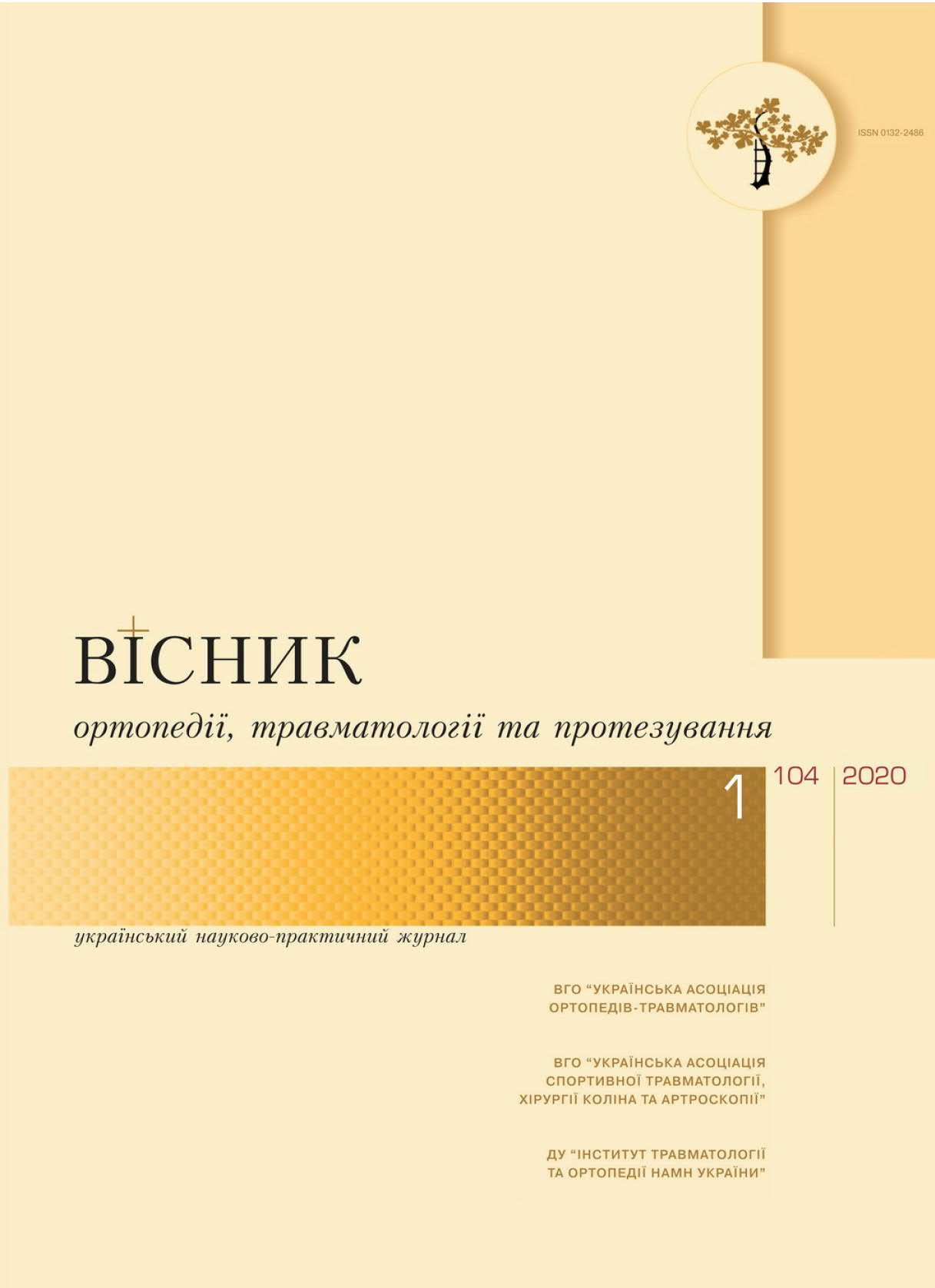Abstract
Summary. In 77 patients (37 men and 40 women) of different age groups who underwent hip joint replacement, the content of calcium, phosphorus, creatinine, alkaline phosphatase and hydroxyproline in blood serum was determined. The results of a study of biochemical markers showed the predominance of osteoporotic processes in patients of elder age groups, as is evidenced by an increase in the level of free hydroxyproline and a decrease in protein-bound hydroxyproline in blood serum, as well as by an increase in the level of hydroxyproline in daily urine excretion compared with reference indices. A decrease in calcium excretion with age both in men and women can be associated with a decrease in calcium intake and its absorption in the gastrointestinal tract, which is typical for the elderly. Calcium has the greatest importance in metabolic disorders of bone tissue. Maintaining the normal state of bones in adults is associated with continuously ongoing process called “bone remodeling”. Violation of remodeling in the direction of increasing bone resorption and reducing bone formation is considered as the main reason for the development of osteoporosis. The processes of bone formation and resorption are displayed in the blood and urine at the level of various enzymes from bone tissue, by products of bone matrix synthesis or cell destruction products. Biochemical markers of osteoporosis manifestations are specific, expressing bone synthesis and resorption processes. The violations of bone metabolism reflect most objectively not the absolute indicators of mineral metabolism and metabolites of the main bone tissue protein (collagen), but the coefficient of their ratios.
References
Gerasimov A.M., Furtseva L.N. Biochemical diagnostics in traumatology and orthopedics // A.M. Gerasimov, L.N. Furtseva. – Moscow: Medicine, 1986. – 235 p.
Diagnosis of systemic osteoporosis // S.T. Zatsepin, S.S. Rodionova, V.S. Yagodovsky [et al.] / Orthopedics, traumatology and prosthetics. – 1988. – Vol 1. – P. 60–64.
Kolb V.G. Clinical biochemistry / V.G. Kolb, V.S. Kamyshnikov. – 1976. – P. 89–95.
Kolb V.G. Clinical biochemistry / V.G. Kolb, V.S. Menshikov. – 1982. – 366 p.
Krel A.A. The method of determining OPRO in urine / A.A. Krel, L.N. Furtseva // Questions of medical chemistry. – 1968. – Vol. 14, Issue 6. – P. 635–640.
Lakin G.F. Biometpia / G.F. Lakin. – Moscow: High School, 1900. – 4th ed. – 352 p.
Povorozniuk V.V. Features changes in mineral density in white rats of Wistar lines depending on age and gender / V.V. Povorozniuk, I.V. Hopkalova, N.V. Grigorieva // Problems of aging and longevity. – 2011. – Vol. 20 (4). – P. 391–401.
Sherepo K.M. On cementless hip replacement joint / K.M. Sherepo // Orthopedics Traumatology and Prosthetics. – 1988. – Vol. 3. – P. 58–62.
Regulation of interleukin-6, osteoclastogenesis, and bone mass by androgens / T. Bellido, R.L. Jilka, B.F. Boyce [et al.] // J. Clin. Invest. – 1995. – Vol. 95. – Р. 2886–2895.
Age-related bone loss and senile osteoporosis: Evidence for both secondary hyperparatireoism and skeletal growth factor deficiency in the eldy / S. Boonen, J. Aersens, P. Broos [et al.] // Agins. Clin. Exp. Res. – 1996. – Vol. 17. – P. 414–422.
Bone density at various sites for prediction of hip fractures. The Study of Osteoporotic Fractures Research Group / S.R. Cummings, D.M. Black, M.C. Nevitt [et al.] // Lancet. – 1993. – Vol. 341. – P. 72–75.
Delmas P.D. Biochemical markers of bone turnover. I: Theoretical considerations and clinical use in osteoporosis / P.D. Delmas // American Journal of Medicine. – 1993. – Vol. 95 (5A). – Р. 11–16.
Comparison of new biochemical markers of bone turnover in late postmenopausal osteoporotic women in response to alendronate treatment / P. Garnero, W.J. Shih, E. Gineyts [et al.] // J. Clin. Endocrinol. Metab. – 1994. – Vol. 79. – Р. 1693–1700.
The diagnosis of osteoporosis / J.A. Kanis, L.J. Melton 3d, C. Christiansen [et al.] // J. Bone Miner Res. – 1994. – Vol. 9. – P. 1137–1141.
Kleerekoper M. Biochemical markers of bone remodeling / M. Kleerekoper // American Journal of the Medical Sciences. – 1996. – Vol. 312 (6). – Р. 270–277.
Lawrence G. Raisz. Translated, with permission of the American College of Physicians, from: The osteoporosis revolution / G. Lawrence // Ann. Intern. Med. – 1997. – Vol. 126. – P. 458–462.
Lindsay R. Modern treatment of osteoporosis: methods of preventing loss bone loss and fracture frequency reduction / R. Lindsay // Medicine of the world 1997. – Vol. 3. – P. 119–125.
Pop L.C. Moderate weight loss in obese and overweight men preserves bone quality / L.C. Pop, D. Sukumar, K. Tomaino // American Journal of Clinical Nutrition. – 2015. – Vol. 101 (3). – Р. 659–667.
The possible diagnostic value of new biochemical markers in aseptic loosening of hip endoprosthesis / U. Schneider, S. Termath, M. Thomsen [et al.] // Z. Orthopad. – 1997. – № 4 (135). – Р. 297–300.
Stegemann H.J. A simple procedure for the determination of hydroxyproline in urine and bone / H.J. Stegemann // Biochem. Med. – 1952. – Vol. 3, № 1. – P. 23–30.
Genetic influences on type I collagen synthesis and degradation: further evidence for genetic regulation of bone turnover / A. Tokita, P.J. Kelly, T.V. Nguyen [et al.] // Clin. Endocrinol. Metab. – 1994. – Vol. 78. – P. 1461–1466.

This work is licensed under a Creative Commons Attribution 4.0 International License.
